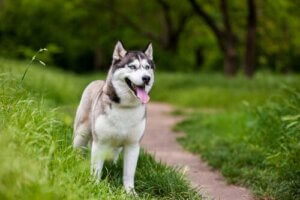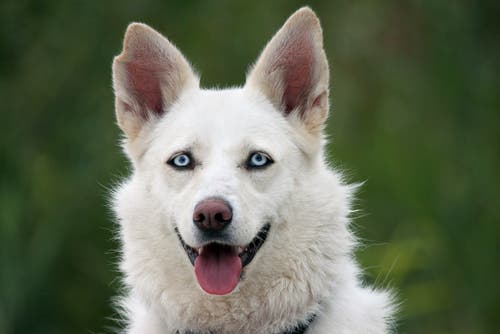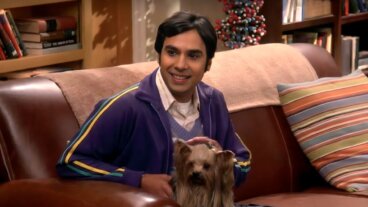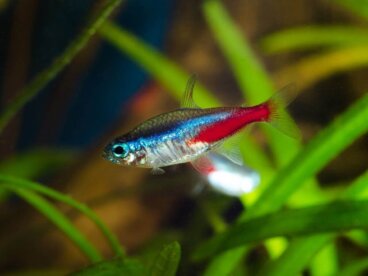Is the Cataract Surgery Procedure Safe?


Written and verified by the lawyer Francisco María García
Cataracts in dogs occur when the lens of the eye becomes cloudy. There may also be spots that hinder their vision and, in many cases, pet keepers have the option to request cataract surgery for their dogs. Continue reading to find out what the implications are of this kind of surgery.
Old age is the main cause of cataracts, but it can also be due to other factors such as bumps or inflammation, and also to complex pathologies such as diabetes.
As with other medical conditions, some breeds are more prone to cataracts than others. This is because there’s an important genetic factor in this disease.
The breeds with the highest propensity for cataracts due to their genetic code are the Cocker Spaniel, Fox Terrier, Bichon Maltese, French Bulldog, Golden Retriever, and Siberian Husky.
Cataract surgery for dogs is a treatment option in which prompt intervention prevents permanent blindness in an animal with this condition.
What’s cataract surgery in dogs like?
Cataract surgery in dogs consists of replacing the lens with an intraocular lens that performs its function. This procedure is known as phacoemulsification of the lens and lasts from 20 to 30 minutes. The dog will be sedated and they’ll also apply local anesthesia during this surgery.

When cataracts are present in both eyes, each eye will be surgically treated separately. Also, they must recover from the first surgery before proceeding to the second one. The results are immediate and it’s about 90% to 95% effective. Thus, in a matter of a week, the dog’s vision will be much improved.
Another important factor to keep in mind is that this kind of surgery will correct the pathology forever. That is, cataracts won’t reappear after a dog has had cataract surgery.
Risks of cataract surgery in dogs
The cataract intervention is a very simple and painless procedure because it’s mostly performed on an outpatient basis. Cataract risks are associated more with the particular condition of the animal than with this kind of surgery.
Advanced cataracts can lead to total blindness. The same can occur with other more severe pathologies such as lens dislocation or glaucoma.
So far, no drug treatment is 100% effective against cataracts. Therefore, the surgical option will always be the best way to improve an animal’s quality of life.
In addition, cataract surgery in dogs can be carried out at any age, among other things because the animal only receives light anesthesia. Thus, adult dogs can undergo this type of surgery without any problems.
Postoperative care
Because this is a simple procedure, it doesn’t require too much aftercare. However, it’s important to respect the rules in order to ensure the success of the results.
As with most procedures, the dog will have to wear a cone for about three weeks. In addition, they’ll receive direct topical treatment on their eyes, as well as antibiotics and anti-inflammatories.
Note that the animal must rest during the recovery period and avoid physical activity or sudden movements, together with any blows to their face or eye rubbing.
In fact, it isn’t recommended to bathe the dog during recovery. Additionally, you should keep them away from any other animals who may bother them. Also, don’t take them out for long walks and avoid places where there may be sand or dust, such as the beach.
Likewise, you must take the dog to their scheduled postoperative checkups, as indicated by the surgeon. This way you can avoid complications such as inflammation, infections, and bleeding.

What to do if you suspect your dog may have cataracts
The first thing to do if you think your dog might have cataracts is to consult a vet who can properly diagnose the condition and determine how far advanced it is. They’ll perform a complete eye checkup and have the animal do some vision tests in order to assess their physical condition.
Keep in mind that you must ideally attend to the dog’s cataracts when they’re still in their initial stage. This is because advanced cataracts may involve a more complex procedure. However, the decision to operate will always be up to the veterinarian. They may or may not recommend it after their initial diagnosis.
The truth is it’s hard to identify the progress of this condition because it can be slow in some cases but fast in others. Therefore, you must consult a vet immediately upon detection of spots or clouds in a dog’s eyes.
Cataracts in dogs occur when the lens of the eye becomes cloudy. There may also be spots that hinder their vision and, in many cases, pet keepers have the option to request cataract surgery for their dogs. Continue reading to find out what the implications are of this kind of surgery.
Old age is the main cause of cataracts, but it can also be due to other factors such as bumps or inflammation, and also to complex pathologies such as diabetes.
As with other medical conditions, some breeds are more prone to cataracts than others. This is because there’s an important genetic factor in this disease.
The breeds with the highest propensity for cataracts due to their genetic code are the Cocker Spaniel, Fox Terrier, Bichon Maltese, French Bulldog, Golden Retriever, and Siberian Husky.
Cataract surgery for dogs is a treatment option in which prompt intervention prevents permanent blindness in an animal with this condition.
What’s cataract surgery in dogs like?
Cataract surgery in dogs consists of replacing the lens with an intraocular lens that performs its function. This procedure is known as phacoemulsification of the lens and lasts from 20 to 30 minutes. The dog will be sedated and they’ll also apply local anesthesia during this surgery.

When cataracts are present in both eyes, each eye will be surgically treated separately. Also, they must recover from the first surgery before proceeding to the second one. The results are immediate and it’s about 90% to 95% effective. Thus, in a matter of a week, the dog’s vision will be much improved.
Another important factor to keep in mind is that this kind of surgery will correct the pathology forever. That is, cataracts won’t reappear after a dog has had cataract surgery.
Risks of cataract surgery in dogs
The cataract intervention is a very simple and painless procedure because it’s mostly performed on an outpatient basis. Cataract risks are associated more with the particular condition of the animal than with this kind of surgery.
Advanced cataracts can lead to total blindness. The same can occur with other more severe pathologies such as lens dislocation or glaucoma.
So far, no drug treatment is 100% effective against cataracts. Therefore, the surgical option will always be the best way to improve an animal’s quality of life.
In addition, cataract surgery in dogs can be carried out at any age, among other things because the animal only receives light anesthesia. Thus, adult dogs can undergo this type of surgery without any problems.
Postoperative care
Because this is a simple procedure, it doesn’t require too much aftercare. However, it’s important to respect the rules in order to ensure the success of the results.
As with most procedures, the dog will have to wear a cone for about three weeks. In addition, they’ll receive direct topical treatment on their eyes, as well as antibiotics and anti-inflammatories.
Note that the animal must rest during the recovery period and avoid physical activity or sudden movements, together with any blows to their face or eye rubbing.
In fact, it isn’t recommended to bathe the dog during recovery. Additionally, you should keep them away from any other animals who may bother them. Also, don’t take them out for long walks and avoid places where there may be sand or dust, such as the beach.
Likewise, you must take the dog to their scheduled postoperative checkups, as indicated by the surgeon. This way you can avoid complications such as inflammation, infections, and bleeding.

What to do if you suspect your dog may have cataracts
The first thing to do if you think your dog might have cataracts is to consult a vet who can properly diagnose the condition and determine how far advanced it is. They’ll perform a complete eye checkup and have the animal do some vision tests in order to assess their physical condition.
Keep in mind that you must ideally attend to the dog’s cataracts when they’re still in their initial stage. This is because advanced cataracts may involve a more complex procedure. However, the decision to operate will always be up to the veterinarian. They may or may not recommend it after their initial diagnosis.
The truth is it’s hard to identify the progress of this condition because it can be slow in some cases but fast in others. Therefore, you must consult a vet immediately upon detection of spots or clouds in a dog’s eyes.
This text is provided for informational purposes only and does not replace consultation with a professional. If in doubt, consult your specialist.








